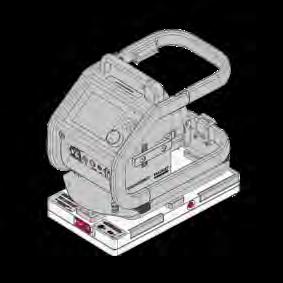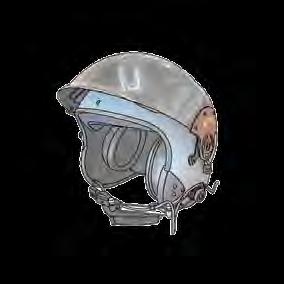
4 minute read
Innovations: Rega’s Design and Development Centre creates customised solutions for the crews.
Making what is good even better
Rega’s Design and Development Centre creates innovative, tailormade solutions, which benefit the crews when out on mission and thus ultimately also our patients. In this way, it is continuing what was the driving force for the Rega pioneers of yesteryear: the on-going improvement of medical assistance by air in the service of the Swiss population.
70
years of innovation Improving its air rescue services is one of Rega’s most important tasks. Ever since it was founded 70 years ago, Rega has constantly been developing ideas on how it can further optimise its aircraft and equipment. However, as its requirements are so specific, Rega is often not able to buy off-the-shelf components. Now as back then, the same thing applies: if Rega wants to improve something, it has to develop it itself. Over the years, however, this has become increasingly complex and costly. Nowadays, aviation organisations are required to comply with a large number of regulations and strict specifications by the regulatory authorities.
Own Design and Development Centre
For example, since a change in the law in 2006, all modifications made to aircraft must be approved and certified by the European Aviation Safety Agency (EASA). However, the implementation and certification of modifications by external partners proved to be a very lengthy process. Therefore, in 2011, Rega responded by setting up its own Design and Development Centre, so that it could implement its ideas and improvements quickly. Since then, Rega has been in the position to make changes to its aircraft and equipment efficiently and flexibly and to implement and certify new developments itself.
The following two examples show how the team of five male engineers and one female engineer are continually improving the equipment and interior fittings in the Rega helicopters.
New helmets: more than just a procurement project
Rega is the only air rescue organisation in Switzerland to perform special intensive care transports. For example, it is able to transport patients who are dependent on a mobile heart-lung machine. The so-called ECMO device assumes some or all of the patient’s respiratory and/ or cardiac functions. The numerous regulations present a major challenge for aircraft to be permitted to carry high-tech medical equipment, such as the 12 kg ECMO machine, on board. For instance, the device and its fixtures in the helicopter or jet must be able to withstand a g-force of up to 20.
Rega’s engineers are currently working on optimising the existing mounts in the cabin so that they are easier to handle and the limited space in the cabin is better utilised. To do this, a design engineer first produced the components in a 3D printer and then tested them to make sure they fitted properly in the helicopter cabin.
Focus on the patient
Finally, a modular, rotatable platform construction was created that can be anchored in the cabin floor. Thanks to custom-made mounts, other medical devices can also be installed and secured on the platform in future. Such sophisticated constructions may seem insignificant. But thanks to the equipment being as easy as possible to handle, the work of Rega’s engineers plays a part in allowing the medical crew to focus entirely on caring for the critically ill patients on board.

Now, after between 10 and 15 years in use, the helmets worn by the helicopter crews need to be replaced. As with every procurement project, Rega is looking into what can be further improved.
Different requirements
The helmets not only serve as protection, but are also indispensable for the crew members being able to communicate with each other, both in the cabin and outside amidst the noise of the helicopter and the wind. Communication between the crew members, as well as with the Operations Centre and operational partners such as the police, must function faultlessly, as this contributes significantly to the success of a mission.
The helmets of the individual crew members – pilot, paramedic and emergency flight physician – differ from each other. For the pilot, for example, it is important that the night vision goggles can be mounted on their helmet easily and securely. The emergency flight physician, on the other hand, not only needs to communicate with the other crew members over the radio, but also to talk to the patient with their helmet on. Consequently, the ear cups of their helmet can be folded back.
Communication must function faultlessly
In their search for the ideal follow-on models, the engineers at the Design and Development Centre evaluate together with the crew members what can be further optimised: the hearing protection, for example, or the radio system. For if this were wireless, it would provide crew members with even greater freedom of movement and enhanced wearing comfort when out on a mission. One particular challenge is posed by the radio and communication systems built into the various crew helmets, which have to work together perfectly. The design engineer is currently having various models tested by the crews to find out exactly what needs to be changed and how the future helmets should be equipped.











